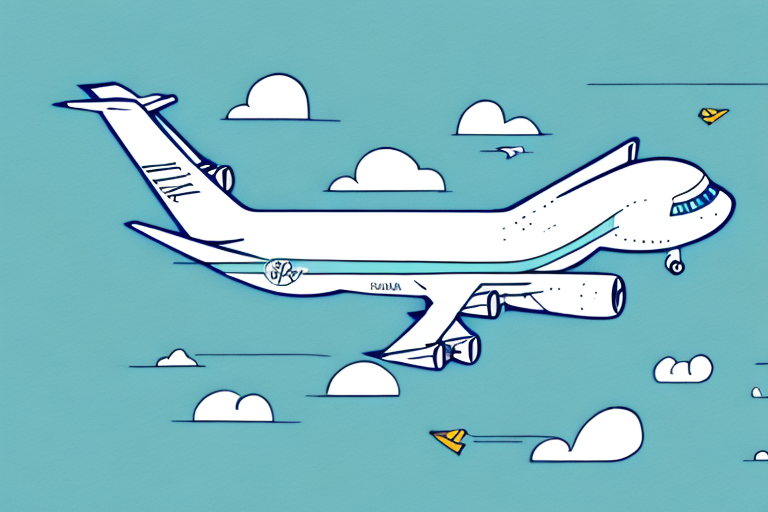In the world of international trade and exporting, it is essential to be familiar with various terminologies and documents to ensure smooth and efficient transportation of goods. One such key document is the Air Waybill. In this article, we will delve into the intricacies of an Air Waybill, its importance in exporting, and how to correctly fill it out. We will also explore different types of Air Waybills, the role of customs in the process, and how it differs from a Bill of Lading. Additionally, we will discuss tracking and tracing shipments, electronic Airway Bills (e-AWBs), international regulations, and best practices for managing Air Waybills. We will also touch upon handling damaged or lost shipments and the transformative impact of technology in this field. Lastly, we will take a glimpse into the future of Air Waybills, highlighting emerging trends and innovations.
Understanding the Basics: What is an Air Waybill?
An Air Waybill (AWB), also known as an air consignment note, is a crucial document used in the logistics and transportation industry to facilitate the movement of goods via airfreight. It serves as a contract of carriage between the shipper, the freight forwarder, and the airline company responsible for transporting the cargo. The AWB acts as a receipt of goods, evidence of the contract, and a document of title.
The Air Waybill contains vital information about the cargo, such as the shipper and consignee details, shipment description, weight, dimensions, number of packages, and declared value. It also includes the terms and conditions of carriage, liability limits, and any special instructions or handling requirements.
One important aspect of an Air Waybill is the tracking number. Each AWB is assigned a unique tracking number, which allows the shipper, consignee, and other parties involved in the shipment to track the progress of the cargo. This tracking number can be used to monitor the location and status of the goods throughout the transportation process, providing real-time updates and ensuring transparency and accountability.
In addition to facilitating the movement of goods, an Air Waybill also plays a crucial role in customs clearance. The AWB contains important information required by customs authorities, such as the nature of the goods, their value, and any applicable duties or taxes. This information helps customs officials assess and verify the cargo, ensuring compliance with import and export regulations. Without a properly completed and accurate AWB, the clearance process can be delayed or even result in the seizure of the goods.
The Importance of Air Waybills in Exporting
An Air Waybill plays a pivotal role in the smooth execution of international trade. It acts as a proof of consignment, providing evidence of shipment and receipt, and serves as a legal document protecting the interests of all parties involved. Without a correctly filled out AWB, difficulties may arise in cargo identification, customs clearance, and shipment tracking.
Furthermore, the Air Waybill contributes to the proper assessment of fees and charges by customs authorities, such as duties, taxes, and levies. It also facilitates the calculation of transportation costs and enables accurate invoicing between the shipper, the freight forwarder, and the airline company.
In addition to its role in facilitating trade and ensuring the smooth movement of goods, the Air Waybill also plays a crucial role in risk management. By providing detailed information about the contents of the shipment, including the nature of the goods, their value, and any special handling requirements, the AWB helps to mitigate the risk of loss, damage, or theft during transportation.
Moreover, the Air Waybill serves as a valuable source of data for statistical analysis and reporting. By collecting information on the volume, value, and destination of exported goods, AWBs contribute to the compilation of trade statistics, which are essential for economic planning, policy-making, and market research.
Key Components of an Air Waybill
An Air Waybill consists of various key components that provide comprehensive information about the shipment. Let’s explore these components in detail:
- Shipper and consignee details: The Air Waybill contains the name, address, and contact information of the shipper, who is the party responsible for delivering the cargo. It also includes the consignee’s details, who is the recipient of the shipment.
- Shipment description: A detailed description of the goods being transported is crucial for customs clearance and identification purposes. It should include the nature of the goods, quantity, weight, dimensions, and any applicable harmonized system (HS) codes for classification.
- Number of packages and unit count: The Air Waybill specifies the total number of packages being shipped and provides a breakdown of the count per package type, such as boxes, crates, or pallets.
- Declared value and currency: The AWB includes the declared value of the shipment, which is essential for insurance purposes and the assessment of customs duties and taxes. It also mentions the currency in which the value is stated.
- Routing and flight details: The document outlines the route the shipment will take and includes the flight number, departure and arrival airports, and the expected delivery date.
- Handling instructions and special requirements: If the cargo requires any special handling or packaging instructions, such as temperature control or fragile labeling, these should be clearly mentioned on the Air Waybill to ensure appropriate treatment throughout the transportation process.
- Terms and conditions of carriage: The AWB contains standard terms and conditions that govern the transportation of the cargo, including liability limits, time limits for claims, and other contractual obligations.


